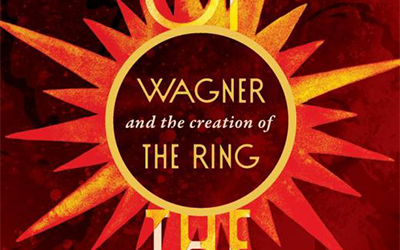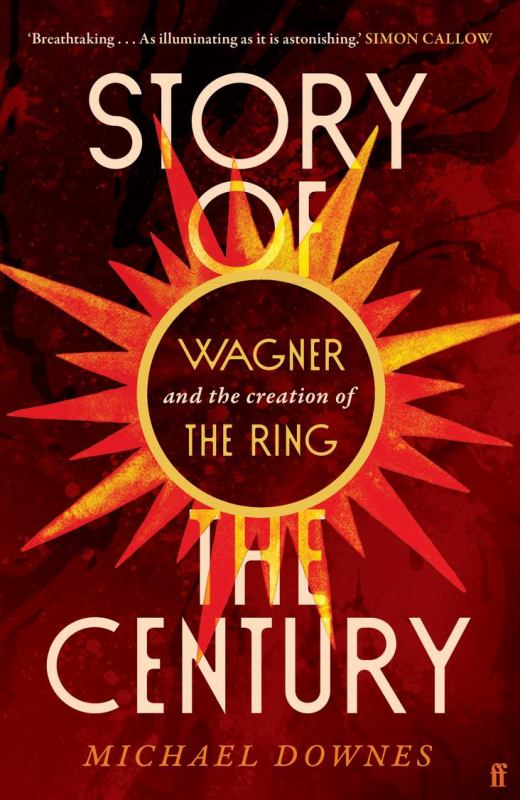
- Free Article: No
- Contents Category: Music
- Review Article: Yes
- Article Title: Who’s afraid of Richard Wagner?
- Article Subtitle: Enduring fascination with Der Ring
- Online Only: No
- Custom Highlight Text:
‘The last word on The Ring will never be written,’ writes Michael Downes in the Prologue to his new book outlining the creative history of Richard Wagner’s tetralogy. As with everything else in Story of the Century: Wagner and the creation of The Ring, Downes makes good sense, for a seemingly infinite number of interpretations of Wagner’s magnum opus are possible. Wagner believed in the power of myth, and the Ring is timeless – about more than the giants, gods, dwarves, and humans it portrays. While on one hand it seems to be a warning against the abuse and retention of power in which love ultimately triumphs, on the other it has been taken as a manifesto for German nationalism and unsavoury racial views. The Ring has also been viewed as a comment on the industrialisation of Wagner’s era, a warning against ecological disaster, as a socialist allegory, even in terms of Jungian psychology – to mention just a few examples, all of which testify to the hold it has over people.
- Featured Image (400px * 250px):

- Alt Tag (Featured Image): John Allison reviews ‘Story of the Century: Wagner and the creation of The Ring’ by Michael Downes
- Book 1 Title: Story of the Century
- Book 1 Subtitle: Wagner and the creation of The Ring
- Book 1 Biblio: Faber, $45 hb, 336 pp
- Book 1 Cover Small (400 x 600):

- Book 1 Cover (800 x 1200):

- Book 1 Readings Link: https://www.readings.com.au/product/9780571371990/story-of-the-century--michael-downes--2024--9780571371990#rac:jokjjzr6ly9m
Downes, Director of Music at the University of St Andrews, offers an excellent introduction to the history of the Ring, primarily aimed at newcomers but one that will also be enjoyed by seasoned Wagnerians, who can never get enough of their favourite subject. This is a good time to be revisiting the topic: 2026 marks the 150th anniversary of the inauguration of the Wagner Festival at Bayreuth, with its first performances of complete cycles of Der Ring des Nibelungen and the world premières of its third and fourth instalments, Siegfried and Götterdämmerung. (Das Rheingold and Die Walküre had been premièred in Munich in 1869 and 1870 respectively.)
The anniversary is also likely to prompt more productions worldwide; hardly any self-respecting opera company is without a Ring. Over the past three decades in Australia, there have been remarkable stagings of the cycle in Adelaide, Melbourne, Bendigo, and Brisbane. Even small companies like to prove themselves through this ultimate operatic virility test, as witnessed recently in London, where Regents Opera successfully performed all four works (with reduced scoring) in an obscure leisure centre. Wagnerians travel the world to ‘collect’ productions, but newbies get caught up in the fever, too. For them, this book will be especially illuminating.
Downes adopts a framing device by opening and closing his story with performances at the Deutsche Oper Berlin of Stefan Herheim’s production in 2022 (still given under Covid-19 conditions) and 2024. Whether or not this conceit will age well remains to be seen, but a chronology (in one of the appendices) is valuable, given his non-linear approach. Nor does Downes necessarily stick to chronological narrative, which is fair enough: Wagner composed the Ring in anything but chronological order.
Putting the synopses themselves in an appendix, too, Downes is free to roam across such fascinating topics as Wagner the revolutionary. It seems a pity that the composer rejected a proposal to write an opera about Tadeusz Kósciuszko, but Barbarossa, Achilles, and Jesus were all heroes that Wagner considered. He certainly thought about what it would mean to change the world, as reflected in the story of his Dresden years and his friendships there with anarchists, including Mikhail Bakunin. All this is a worthwhile way of setting the scene for the actual work on the Ring that began in earnest during Wagner’s nine-year exile in Switzerland, beginning in 1849. It wasn’t long, however, before Wagner’s belief that political action could produce a better society was shattered, primarily by Louis-Napoleon’s dissolution of the French parliament in 1851.
Memorable aperçus along the way include a reminder that the word ‘putsch’ came originally from Schweizdeutsch and that the anonymous writer of an ode for Wagner’s fortieth birthday celebrations in Zurich in 1853 was Johanna Spyri, future author of Heidi. It is also tantalising to realise that a few dozen books from Wagner’s Dresden library remain missing. There were several editions of the Nibelungenlied in Wagner’s library, and Downes suggests that Wagner’s rising anti-Semitism, seen during this time with the publication of his notorious essay Das Judenthum in der Musik (‘Jewishness in Music’), can be traced to his immersion in German mythology.
Downes is also good on the plot’s origins in Norse and Icelandic mythology. He points out where Wagner sharpened up the focus of these stories, making Wotan the father of Brünnhilde, not the case for Odin and Brynhild in the Völsung Saga. It is perhaps an omission that Wagner’s exact contemporary Giuseppe Verdi (both were born in 1813) hardly gets a mention, not least because of Verdi’s parallel obsession with father-daughter relationships in such operas as Rigoletto and Simon Boccanegra. Both Verdi and Wagner were in tune with their fellow creators of dramas of paternity; after all, filial relationships (and the danger of becoming an orphan) haunt the works of Charles Dickens, born in 1812. Whether or not they could be said to be anticipating – subconsciously or even consciously – the parent-child theories of Sigmund Freud, the barely veiled musical passion in these works remains as modern as ever.
Downes does look at how philosophers shaped the story of the Ring, but at the centre of the book are four chapters on each of the operas. They interweave plot and musical details with Wagner’s ever-shifting biographical situations. The author neatly mixes descriptions of the works with biography, and makes an analogy between Wagner’s Switzerland and Valhalla while comparing his unhappy visits to London with a real-life Nibelheim (home to the slave dwarves).
If the book’s title sounds a little tabloidy, it should not be forgotten that amid all the newspaper coverage of events at Bayreuth in 1876 – where attendees included royalty from as far afield as Russia and Brazil, and many major composers of the day – even the New York Herald devoted its first four pages to Bayreuth. Indeed, it is Downes’s account of the industry around the Ring that is most valuable and entertaining (including the story of the first Leitmotif hunter, Hans von Wolzogen). It was the publication of the four libretti in 1863 that inspired the support of Ludwig II, patronage more important to the king than the business of governing Bavaria (his officials expressed their resentment by supplying some of Wagner’s cash in heavy sacks of coins).
Fulfilling all Wagner’s demands would have disrupted the public finances of Bavaria for a generation, and though the book is not a biography aiming to analyse Wagner’s character, the egotistical composer – duplicitous also with publishers and benefactors – doesn’t come out of it well personally. Not only an anti-Semite, he displayed anti-French sentiments that extended to relishing the bombarding of Paris during the Franco-Prussian War (possible retaliation for Paris not having recognised his genius). Machinations around the casting of the first Ring cycle are entertainingly recounted, and we learn that at the 1875 try-out the orchestral musicians were paid only their travel expenses and subsistence (shades of Nibelheim). Wagner’s genius clearly extended beyond writing music dramas and to inspiring total loyalty where it mattered, leaving Ludwig II to declare that Wagner’s spirit had made it a ‘fortunate century’.


Comments powered by CComment